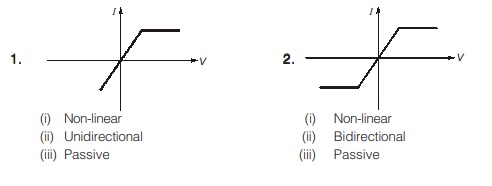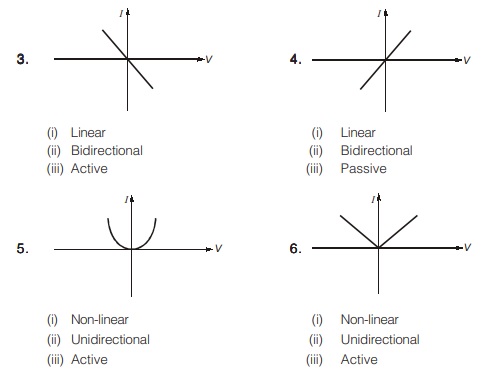Circuit Elements
An element is the basic building block of a circuit. By definition, a simple circuit element is the mathematical model of a two-terminal electrical device, and it can be completely characterized by its voltage-current relationship; it cannot be subdivided into other two-terminal devices.
For example,
- If the voltage across the element is linearly proportional to the current through it, then element is called as a resistor.
- If the terminal voltage is proportional to derivative of current with respect to time, then element is called as a inductor.
- If the terminal voltage is proportional to integral of current with respect to time, then element is called as a capacitor.
- If the terminal voltage is completely independent of current, or the current is completely independent of voltage, then element is called as an independent source.
- The element for which either the voltage or current depend upon a current or voltage elsewhere in the circuit; such elements are called as dependent source.
Classification of Network Elements
Active and Passive Elements
- Those devices or components which produce energy in the form of voltage or current are called Active Components. E.g., diodes, transistor.
- Active components is also called as Energy Donor. They do not require an external and conditional source to operate in the circuit. They have gain more than 1. So, they can amplify the signal. These circuit components can control the flow of current through the circuit.
- Those devices or components which store or maintain energy in the form of voltage or current are known as Passive Component E.g., Resistor, Capacitor, Inductor etc. Passive components are also called as Energy Acceptor. Passive components requires an external and conditional source to operate in the circuit. These components are incapable of providing any gain in energy and current.
Remember:
- The transistor provide power gain so they are active element, but transformer have same power at input and output they are not active element.
- The active element should be able to provide power/power gain to the circuit for infinite duration of time, that is why the charged capacitor or inductor are not active elements.
Bilateral and Unilateral Elements
- For a Bilateral element, the voltage-current relationship is the same for current flowing in either direction. Resistors, inductors and capacitors are the examples of bilateral elements.
- For a Unilateral element, the voltage-current relationship is different for two directions of current flow. Diode is an Unilateral elements.
Lumped and Distributed Elements
- Lumped elements are considered as the separate elements which are very small in size. For example resistor, inductors, capacitors.
- Distributed elements are not electrically separable. These are distributed over the entire length of the circuit. For example, transmission lines.
NOTE :
The size of Lumped element is small with respect to signal wavelength. At steady state we can consider distributed element as Lumped element.
Linear and Non-linear Elements
- Linear Elements : These are elements in which constituent relation, the relation between voltage and current is a linear function. They obey the homogeneity and additivity property. E.g., resistance, capacitances, inductances and linear dependent sources. The main function of a linear element is to oppose the current flow or energy storing or energy conversion.
- Non-Linear Elements : These are elements in which the relation between voltage and current is non linear function. These elements does not follow additivity and homogeneity property. E.g., Diode, transistors.
I-V Characteristic Curves for Different Elements
Following are given some I-V characteristic curves for different elements, looking at these characteristics we can find the type of element.
Remember:
- If the characteristic curve is similar in opposite quadrants then the element is bidirectional otherwise it is unidirectional.
- If ratio of voltage to current at any point on characteristic curve is negative then the element is active otherwise it is passive.
- Every linear element must exhibit bidirectional property.
Characteristics


<< Previous | Next >>
Must Read: What is Network Theory?
WhatsApp Group
Join Now
Telegram Group
Join Now

